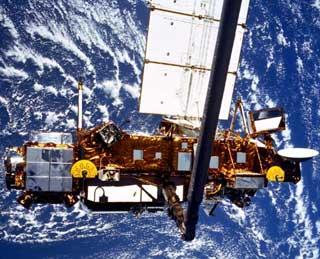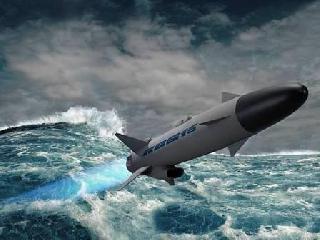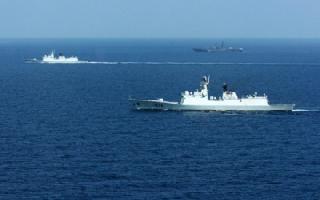
The seven-ton Upper Atmosphere Research Satellite (UARS). Photo: NASA.
HOUSTON (PTI): A 6.5 ton defunct satellite hurtling uncontrolled towards Earth has likely plunged into a remote section the Pacific Ocean off the western US coast, American space agency NASA said.
The Upper Atmosphere Research Satellite (UARS) crossed over portions of Indian Ocean and Africa before splashing down sometime between 11:23 pm (local time) Friday and 1:09 am on Saturday, NASA officials said.
NASA said all debris from the research satellite, the biggest piece of US space junk to fall uncontrolled in 32 years, appears to have dropped in a remote section of the Pacific Ocean well "away from the western coast of the US," but the precise spot may never be pinpointed.
There was a 1-in-3,200 chance of a person getting hit by falling debris, but there is no such report yet. "NASA is not aware of any reports of injury or property damage," the officials wrote in a statement.
Nick Johnson, chief scientist for orbital debris at the National Aeronautics and Space Administration, told reporters the fiery trajectory of the 13,000-pound satellite ended as it crossed eastward over portions of the Indian Ocean and Africa for the final time.
It then most likely disintegrated and scattered debris over a roughly 500-mile stretch across the northern portion of the Pacific.
About 11 hours after the plunge, he said there is no credible report about debris falling on land or anyone recovering satellite parts contrary to widespread Internet speculation about purported remnants of the satellite falling to the ground in Canada or elsewhere.
But "we may never know" precisely where the debris ended up, Johnson told reporters, as ground-based sensors and other tracking devices provide only approximate locations of where the satellite started breaking up, and debris began falling vertically.
NASA also said it had not received any reports of debris sightings from aircraft or vessels.
The descent of the 20-year-old satellite, which stopped collecting climate data about six years ago, was the largest object NASA has tracked in an uncontrolled re-entry for more than three decades.
But about once a year, similar-size space objects plummet back to Earth amid commands from the ground.
No reports of space junk or debris causing injuries on the ground have been substantiated since the beginning of space age more than five decades ago.
The satellite's descent path crossed over portions of Africa and inhabited sections of northern Canada.
But in its latest update on Saturday, NASA said that the best simulations of Pentagon trackers, as well as those developed separately by a government-wide team of experts, strongly indicate "all that debris dropped in the Pacific Ocean."
In the past, NASA and the Pentagon have failed to precisely map the re-entry of some defunct satellites, or verify where debris fell.
As "practically the entire re-entry path" during the final phase was over water, Johnson said, all the evidence so far points to pieces ending up in the Pacific. But he added "We don't exactly know where the debris field is."
The US largely relies on ground-based sensors and sophisticated computer systems to keep track of more than 20,000 pieces of orbiting debris, and the same system is used to follow satellites or other objects that fall back to Earth.
More recent satellites are designed so that operators can bring them out of orbit and control their trajectory as they take the final plunge through the atmosphere.
With an estimated 750 or more satellites now in orbit and many more nations now seeking to launch satellites than ever before overall collision hazards are expected to increase.
Experts worry the threats are particularly significant around some widely used orbital locations.
Astronauts aboard the international space station periodically are forced to take emergency steps to deal with threats.
 Previous Article
Previous Article Next Article
Next Article













The Indian Air Force, in its flight trials evaluation report submitted before the Defence Ministry l..
view articleAn insight into the Medium Multi-Role Combat Aircraft competition...
view articleSky enthusiasts can now spot the International Space Station (ISS) commanded by Indian-American astr..
view article